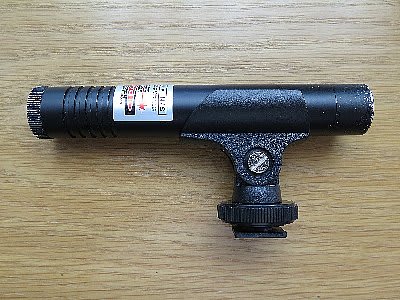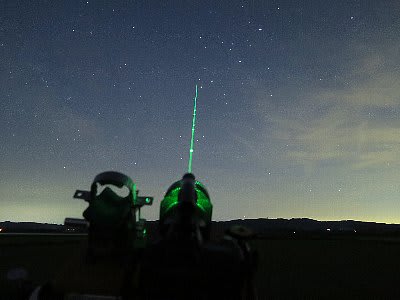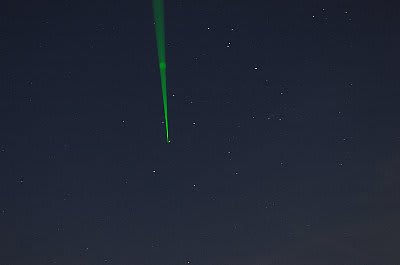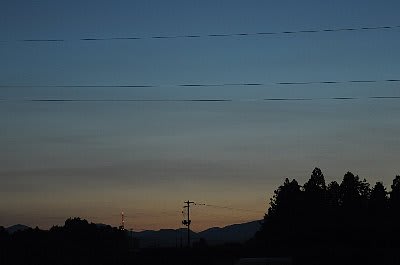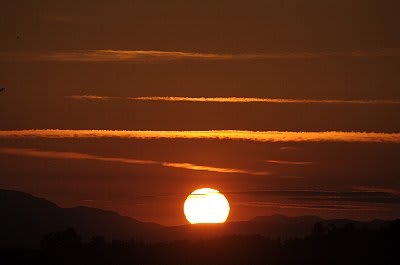日本からは、ほぼ撮影ができなかったC/2014 Q1パンスターズ彗星…
南半球では簡単に撮影できているようです。またしてもアンラッキーな北半球です。
撮影レポートを読むと、肉眼で見ることはでないが、双眼鏡では確認できるとのこと…
双眼鏡で確認できた尾の長さは2°、写真では4.5°だったそうです。
南半球のウオッチャーさんたちが撮影した写真を時系列で並べてみました。
この彗星…、もし地球に接近していたらかなりのグレートコメットになったことでしょうね。
Spaceweather.com REALTIME IMAGE GALLERYより
2015年7月14日
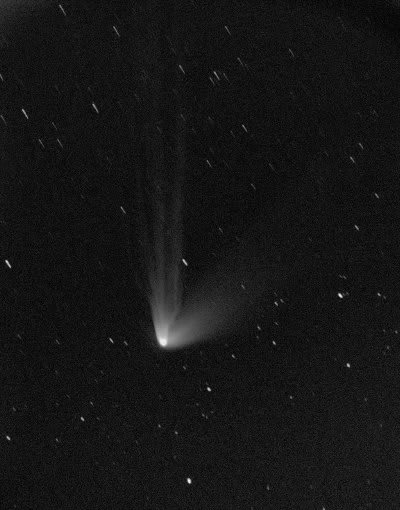
Taken by michael jäger on July 14, 2015 @ Farm Tivoli Namibia
2015年7月15日
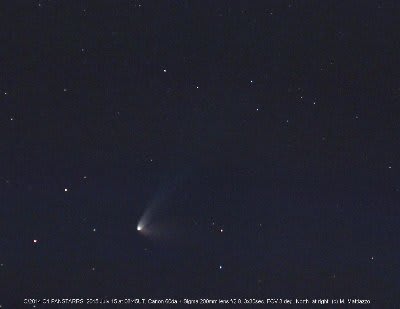
Taken by Michael Mattiazzo on July 15, 2015 @ Swan Hill, Australia
2015年7月15日
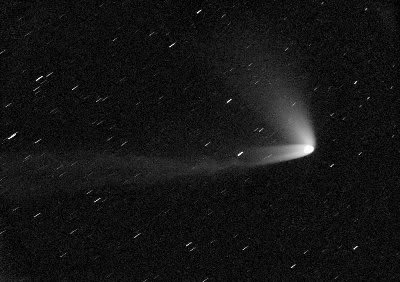
Taken by michael jaeger on July 15, 2015 @ farm tivoli namibia
2015年7月16日
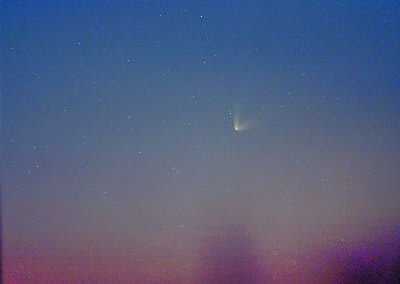
Taken by Lui Weber on July 16, 2015 @ Weipa QLD
2015年7月17日
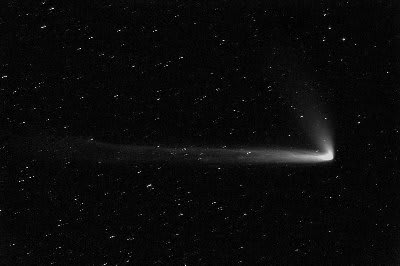
Taken by michael jaeg on July 17, 2015 @ farm tivoli namibia
2015年7月17日
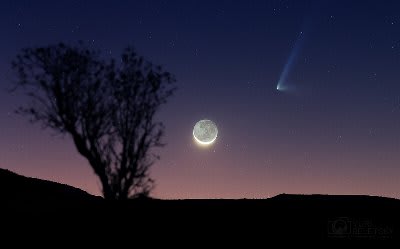
Taken by Yuri Beletsky on July 17, 2015 @ Chile
以下 Michael JaegerのHPより
2015年7月18日
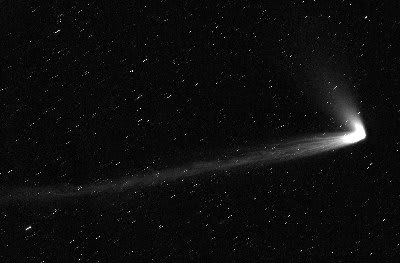
Shaped like a flock of flying geese, only it’s flying dust. A more detailed photo of Comet C/2014 Q1 PanSTARRS from July 18, 2015. The ion or gas tail stretches to the left. The primary dust tail overlaps the gas tail. The Type III dust tail juts off to the upper left of the coma. Click for hi res version. Credit: Michael Jaeger
2015年7月19日
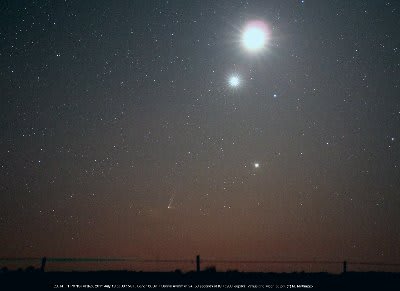
July 19, 2015 from Swan Hill, Victoria, Australia.
Details: 40mm lens, ISO 3200, 30-seconds exposure. Credit: Michael Mattiazzo
2015年7月19日
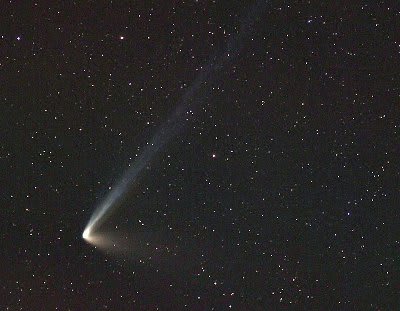
Telephoto lens view of the comet clearly shows it has three tails. The longest is the ion or gas tail. A shorter dust or Type II tail is superimposed on the gas tail closer to the comet’s head (it bows out a bit before overlapping the ion tail). A third, yellow-colored Type III dust plume appears to the right of the head. Credit: Michael Mattiazzo
Visual tail lengths through 25x100mm binoculars: 2° degree long ion tail (Type I) superimposed on a 1° dust tail (Type II) in PA 104 and a 1° degree long dust trail (Type III) in PA 23. The photographic length of the ion tail is >4.5°.” - See more at: http://astrobob.areavoices.com/2015/07/19/meet-the-most-beautiful-comet-youll-never-see-c2014-q1-panstarrs/#sthash.mLWfNJLk.dpuf
EARTHSKY // TODAY'S IMAGE(RELEASE DATE: JUL 24, 2015)より
2015年7月19日
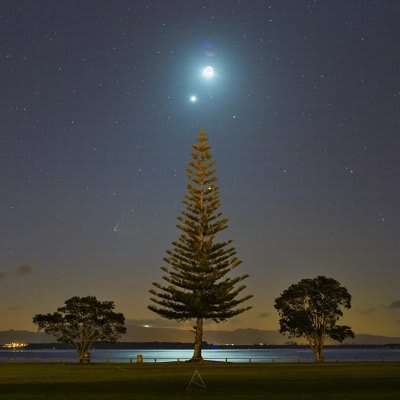
Venus, moon, Jupiter, comet. The comet is in the lower left of this photo, which was taken by Amit Ashok Kamble on July 19, 2015. He wrote: “It wasn’t visible much visually but was a good view through binoculars, ‘scopes and camera. It’s fascinating how it has two tails.” Visit Amit Kamble Photography on Facebook.
2015年7月22日

Venus (brightest), Jupiter (second-brightest) and star Regulus make a triangle. The comet is to their left. Composite image – created from two images (sky and landscape) – taken on July 22, 2015 by Marco Nero in New South Wales, Australia. Canon EOS 6D with Canon EF 85mm f/1.2L USM II lens.
Spaceweather.com REALTIME IMAGE GALLERYより
2015年7月23日
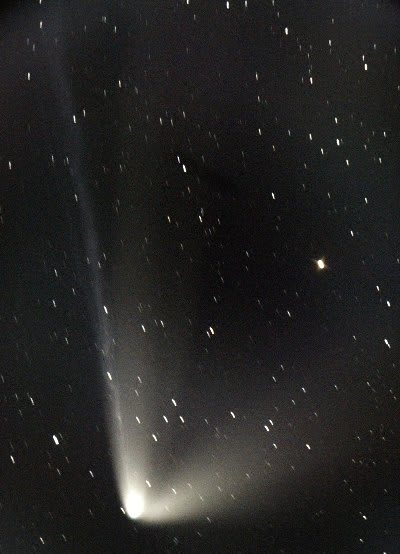
Taken by iAN Griffin on July 23, 2015 @ Portobello, New Zealand
Michael Jaegerさんが述べているように、 Type Ⅰ Type II Type Ⅲの尾がはっきり出ています。どことなくヘール・ボップ彗星を彷彿とさせる形状ですね。
南半球では簡単に撮影できているようです。またしてもアンラッキーな北半球です。
撮影レポートを読むと、肉眼で見ることはでないが、双眼鏡では確認できるとのこと…
双眼鏡で確認できた尾の長さは2°、写真では4.5°だったそうです。
南半球のウオッチャーさんたちが撮影した写真を時系列で並べてみました。
この彗星…、もし地球に接近していたらかなりのグレートコメットになったことでしょうね。
Spaceweather.com REALTIME IMAGE GALLERYより
2015年7月14日

Taken by michael jäger on July 14, 2015 @ Farm Tivoli Namibia
2015年7月15日

Taken by Michael Mattiazzo on July 15, 2015 @ Swan Hill, Australia
2015年7月15日

Taken by michael jaeger on July 15, 2015 @ farm tivoli namibia
2015年7月16日

Taken by Lui Weber on July 16, 2015 @ Weipa QLD
2015年7月17日

Taken by michael jaeg on July 17, 2015 @ farm tivoli namibia
2015年7月17日

Taken by Yuri Beletsky on July 17, 2015 @ Chile
以下 Michael JaegerのHPより
2015年7月18日

Shaped like a flock of flying geese, only it’s flying dust. A more detailed photo of Comet C/2014 Q1 PanSTARRS from July 18, 2015. The ion or gas tail stretches to the left. The primary dust tail overlaps the gas tail. The Type III dust tail juts off to the upper left of the coma. Click for hi res version. Credit: Michael Jaeger
2015年7月19日

July 19, 2015 from Swan Hill, Victoria, Australia.
Details: 40mm lens, ISO 3200, 30-seconds exposure. Credit: Michael Mattiazzo
2015年7月19日

Telephoto lens view of the comet clearly shows it has three tails. The longest is the ion or gas tail. A shorter dust or Type II tail is superimposed on the gas tail closer to the comet’s head (it bows out a bit before overlapping the ion tail). A third, yellow-colored Type III dust plume appears to the right of the head. Credit: Michael Mattiazzo
Visual tail lengths through 25x100mm binoculars: 2° degree long ion tail (Type I) superimposed on a 1° dust tail (Type II) in PA 104 and a 1° degree long dust trail (Type III) in PA 23. The photographic length of the ion tail is >4.5°.” - See more at: http://astrobob.areavoices.com/2015/07/19/meet-the-most-beautiful-comet-youll-never-see-c2014-q1-panstarrs/#sthash.mLWfNJLk.dpuf
EARTHSKY // TODAY'S IMAGE(RELEASE DATE: JUL 24, 2015)より
2015年7月19日

Venus, moon, Jupiter, comet. The comet is in the lower left of this photo, which was taken by Amit Ashok Kamble on July 19, 2015. He wrote: “It wasn’t visible much visually but was a good view through binoculars, ‘scopes and camera. It’s fascinating how it has two tails.” Visit Amit Kamble Photography on Facebook.
2015年7月22日

Venus (brightest), Jupiter (second-brightest) and star Regulus make a triangle. The comet is to their left. Composite image – created from two images (sky and landscape) – taken on July 22, 2015 by Marco Nero in New South Wales, Australia. Canon EOS 6D with Canon EF 85mm f/1.2L USM II lens.
Spaceweather.com REALTIME IMAGE GALLERYより
2015年7月23日

Taken by iAN Griffin on July 23, 2015 @ Portobello, New Zealand
Michael Jaegerさんが述べているように、 Type Ⅰ Type II Type Ⅲの尾がはっきり出ています。どことなくヘール・ボップ彗星を彷彿とさせる形状ですね。










